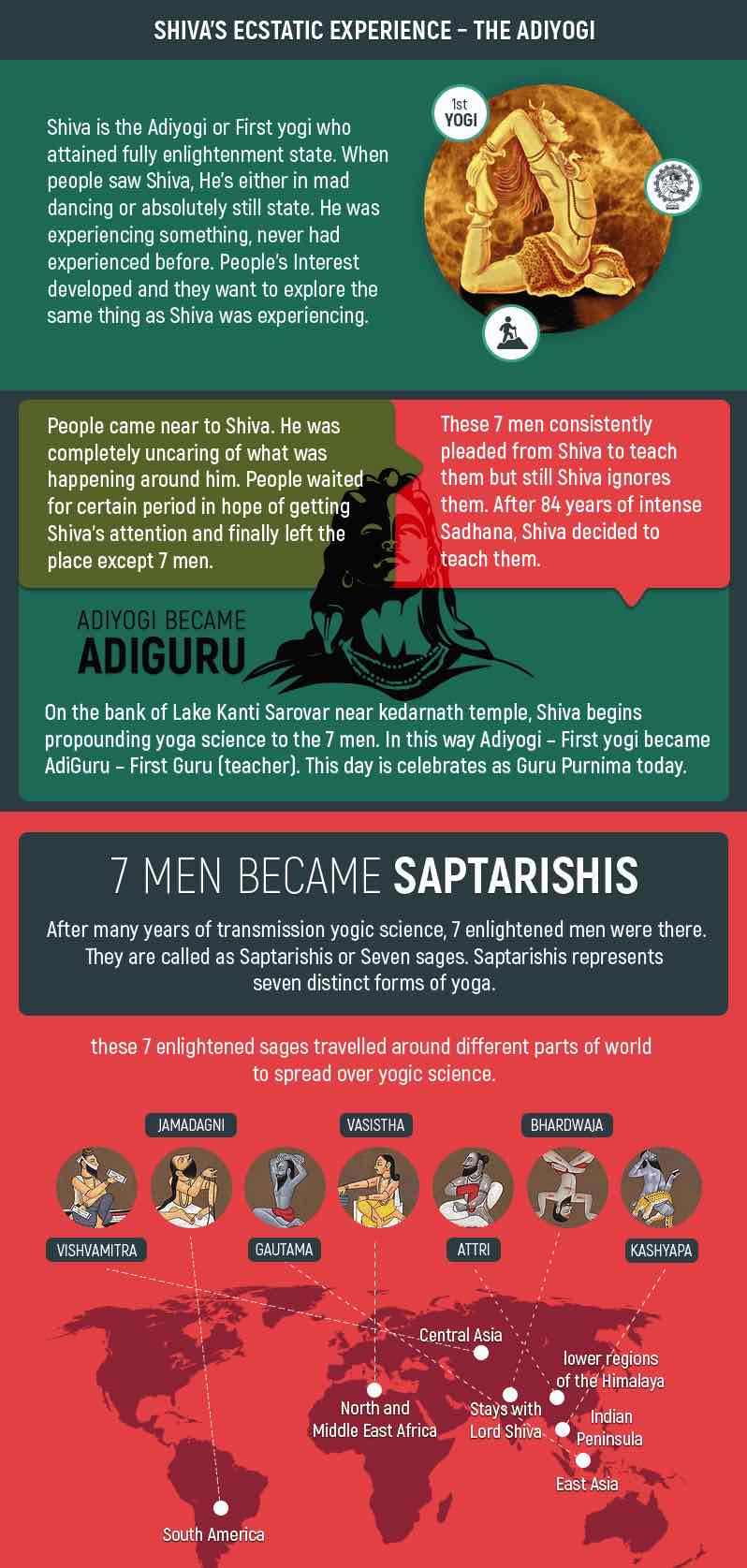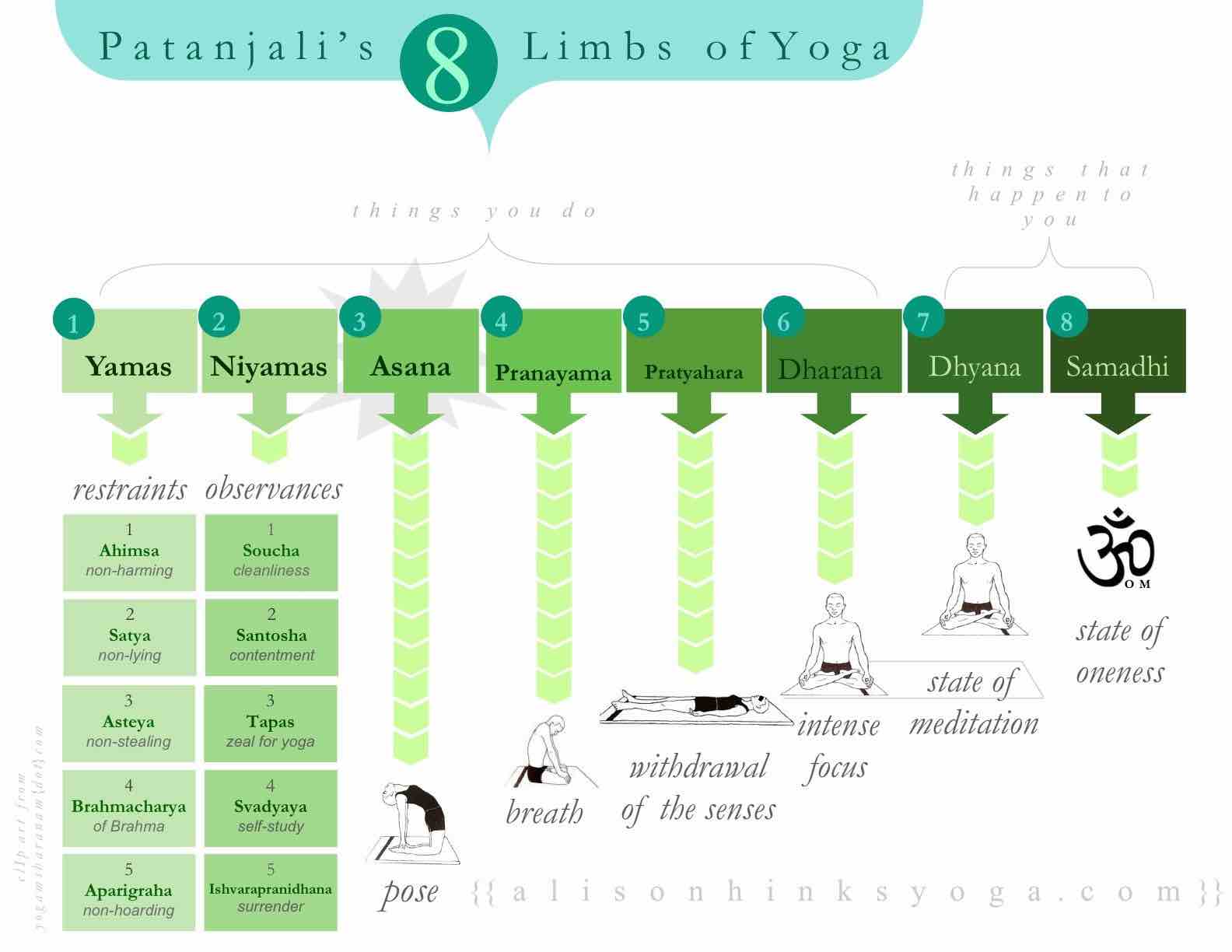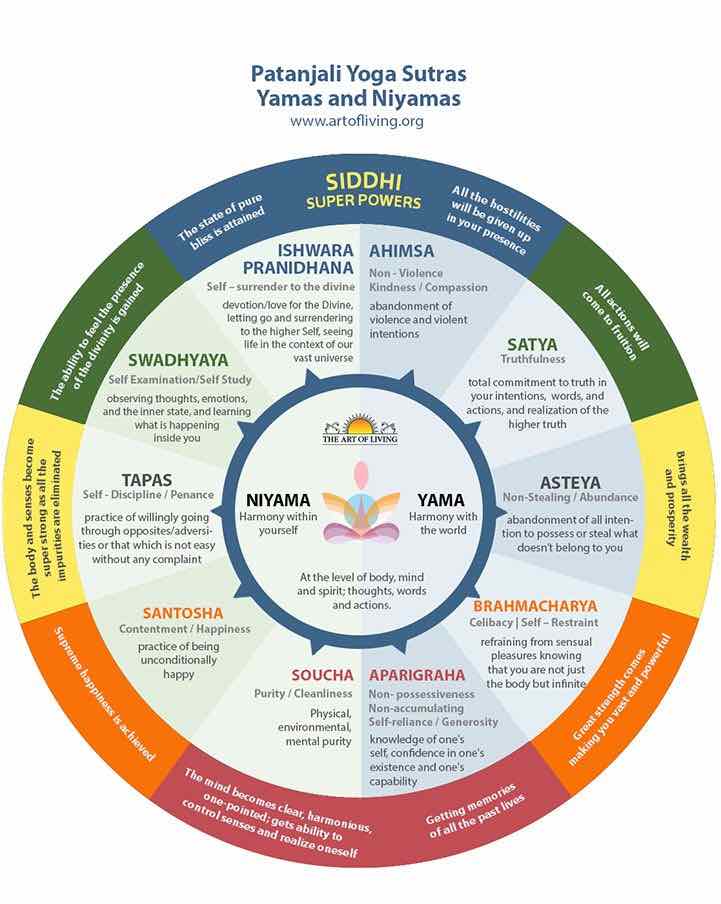What is yoga, really? Hint: We are not yogis
Yoga / April 23, 2020 / 6 Minute Read / Comments
Today, the word yoga conjures up an image of a cool yoga-pant bearing, colorful yoga mat carrying self-described ‘yogi’ whose normal vocabulary consists of the words ‘namaste’ and maybe a myriad other Sanskrit names of the poses (asanas) translating to names of animals, flowers, or other natural elements. The more the acrobatic capability of the said ‘yogi’ the more advanced their perceived yoga practice. Understandably enough, the American yoga industry has doubled in revenue to $12 billion since 2012 [1] and has led to a subsequent dumbing down of this 7000+ year old ancient Indian way of life. In this post, I will share the basics about the history, philosophy and its evolution to the modern yoga of today.
What is yoga, really?
Yoga stems from the Sanskrit root, “Yuj” which means ‘to yoke’ or ‘to unite.’ The union of the mind, body, spirit and emotions is yoga. It is one of the most natural practices that relies on internal tools rather than external and takes us back to our real nature like the correct and natural way to breathe, sit, relax, eat, and live life. Yoga answers all our life questions. Shiva is believed to be the Adiyogi, the first yogi. [2]
 |
|---|
Various texts mention and define yoga as follows:
-
Vedas (translated as ‘wisdom’ or ‘knowledge’): Orally transmitted in a master-disciple setting more than 3000 years ago, the great sage Vyasa compiled them and defined yoga as samadhi - ‘युज समाधौ’ (yuj samadhou). Samadhi, the last limb of Ashtanga yoga, the eight-fold path, is the highest level of concentration, wherein the individual consciousness or the mind merges with the universal consciousness or the highest reality.
-
Bhagavad Gita (means the ‘divine song’): Part of the great epic Mahabharata, also authored by Vyasa, it defines yoga as, “योगः कर्मसु कौशलम्” (yogah karmasu kaushalam), excellence in actio / work. Also known as Karma Yoga, Krishna explained to Arjuna that the ultimate yoga is that of selfless service to all beings. Enlightenment can be achieved by doing the best work possible keeping aside the ego, personal desires, and without expecting anything in return. Another definition in the Bhagavad Gita is “समत्वं योगः उच्यते” (samatvam yoga uchyate), maintaining the state of mental equilibrium / calmness / equanimity is yoga. A calm mind and steady body are the hallmarks of yoga philosophy that lead to oneness of the yogi with the universe.
-
Yoga Sutras (aphorisms): Sage Patanjali, also known as the ‘father of modern yoga’ organized knowledge from the diverse schools of yoga in concise drops of wisdom around 2,500 years ago. He defined yoga as “योगश्चित्तवृत्तिनिरोधः” (yogash-chitta-vritti-nirodhah), yoga is stopping the fluctuations / modifications of the mind. The modifications of the mind are correct knowledge (pramana), false knowledge (viparyaya), imagination (vikalpa), sleep (nidra), and memory (smriti). All these distort the true nature of the self and cause ripples in the still water of the lake (our mind).
Out of the 196 sutras, only 3 mention the word ‘asana’ (physical postures), which means that ~99% of yoga is not about the physical body.
In fact, the asanas were only devised to be able to make one’s state of being steady and comfortable, according to the sutra “स्थिरसुखमासनम्” (sthira-sukham-asanam) in order to be able to sit down and meditate for realization of the true self. For a yogi, the ascetic monks who dedicate their life to yoga, meditation is the direct means to attaining Samadhi. For this, lightness of body was achieved through a handful of food and water per day, four hours of sleep, and the rest of the time for meditation. Rigorous physical exercise was inconvenient and their wisdom and insight gave birth to asanas to maintain their internal and external body healthy.
The increased modern focus on the physical body and the yogic obsession with flexibility and headstands not only deters many to explore yoga but also causes unnecessary injuries. Sorry to say, but my ability to bend the body in complicated shapes does not make me a yogi.
According to Patanjali, a yogi is one who follows the classical eight-fold path called Ashtanga Yoga, also synonymous and confused with a style of rigorous asana flow. The eight elements are: Yamas (social observances), niyamas (ethical and personal observances), asanas (postures), pranayama (control of the vital life force via breath), pratyahara (withdrawal of the senses), dharana (one-pointed concentration), dhyana (meditation), and samadhi (union of individual and collective consciousness).
Below are nice infographics explaining the eight limbs:
 |
|---|
 |
|---|
While many of us might be on the yogic path, there is a special reverence for the word ‘yogi’ in India as this eight-fold path is a difficult one to follow. It is reserved for the ascetics or even householders who have incorporated selfless-service, ethos, and integrity through the practice of yoga in their every breath. Thus, yoga is the ultimate life purpose of a yogi.
Types of yoga
This is also a very confusing and misunderstood concept because of the emergence of physical practices that have a plethora of different name tags. Google types of yoga and you will find: vinyasa, kundalini, yin, Iyengar, Bikram, even power, goat and beer yoga. Today, meditation is separated from yoga and has evolved as a parallel industry in its right. Would Patanjali approve? He would be as lost as the rest of us, I surmise. While asanas and meditation are beneficial in their own right, this modern marketing in an attempt to lure the busy folks into a physical workout separate from a meditative practice takes away from the spiritual growth and holistic essence of yoga.
The majority of yoga in the studios can be considered as vague variations of Hatha Yoga, a tradition propounded by the yogis of the Natha lineage in the 15th century. The six-fold Hatha Yoga system omits the first two steps of ethical and social codes of conduct and “focuses primarily on the purification of the body as a path that leads to purification of the mind. Hatha literally means ‘forceful’ or ‘stubborn’ referring to the yogis who believed that its practice was challenging and by forcing it, spiritual liberation was achieved.” [3]
Since yoga is an experiential science, it is best practiced by following one of the following four classical types of yoga:
-
Raja Yoga: Swami Vivekananda equated Patanjali’s Ashtanga yoga with Raja yoga. Hatha Yoga is part of Raja Yoga, which “emphasizes control of the intellect” using meditation, concentration and breath control to attain enlightenment. [4]
-
Karma Yoga: Selfless service by acting without expecting anything, respecting everything to rid the ego, personal desires, attachment and selfishness results in understanding the true reality of the self and the world.
-
Jnana Yoga: An intellectual path for the inquisitive minds, knowledge is paramount to remove ignorance. On questioning everything temporally, everything else but the self and the universe is untrue and this wisdom leads to the union of the two.
-
Bhakti Yoga: Devotion to the universal consciousness or the divine reality, Bhakti is dedication to whatever is meaningful to you. Through chants, prayers, and japa (repetition of mantras), the emotional energy transforms into pure love for divinity and releases the mind from the shackles of suffering and illusion.
As you might have gathered, there is something for everyone in the holistic life science of yoga uniting the inner self with the cosmos. Those who are on the path are fortunate not only because of its obvious benefits like flexibility, calmness, pain relief and mindfulness, but also the life-transforming gift to get closer to the true nature of the self and everything around us. As the mystic Sadhguru says, ‘I’m neither the mind, nor the body.’ I am much more than that, an eternal soul, an energy untouched by time and space. The realization that we are all part of the same universal life force and capable of enlightenment should be reason enough why you should give yoga a try. At the end, all that matters is the Self, and it’s best appreciated without rose-colored glasses. When we liberate our true nature from the material and start seeing things just the way they are, we become joyful. Also, think twice when you hear, see or use the word ‘yogi’!
If you have made it this far into the article and would like to explore in-depth the different yogic practices that we can tailor to fit your needs and preferences, please do not hesitate to schedule a meeting with me.
Love and light from a zealous sadhaka (practitioner),
Zeal
[1] Revenue of the yoga industry in the United States from 2012 to 2020
[2] What is Yoga: Importance, Philosophy, History & Benefits
[3] What is Hatha Yoga?
[4] Students’ Handbook TTC, The Yoga Institute, Nov. 2018